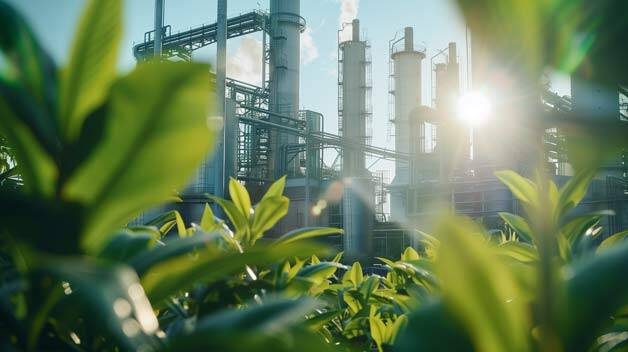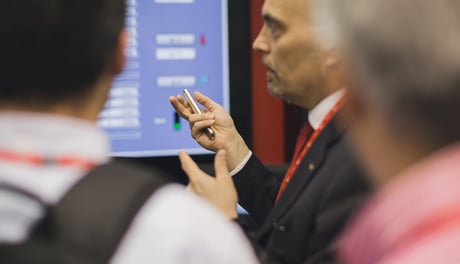
The manufacturing world is currently investigating ways to decrease production costs and increase productivity. The integration of automation technologies has helped the industry gradually evolve over the past few decades, with the introduction of sensors and robotic technology reducing the number of human workers needed on production lines. A Moody's survey on the margins of 24 industrial giants with credit ratings of A or higher found that the average margin (before interest, taxes, depreciation and amortisation) had risen to 16.4% last year, up from 13.1% in 2013, a result achieved through targeted actions in the field of automation.
Today, however, the pace at which this transformation is occurring is accelerating, and radical changes in the way in which manufacturing plants operate are expected by the end of the decade. This is revealed by a McKinsey report. The consulting firm estimates that the industrial automation market will be globally worth 115 billion dollars (around 108 billion euro) by 2025, with a very fast growth in the segment of cloud-based software and industrial Internet of Things (IIoT)
platforms.
What are production costs?
More specifically, what are the production processes that could be the targets of an industrial automation strategy aimed at reducing the spending? To understand how to reduce production costs, it is first of all necessary to clarify the difference between fixed costs and variable costs.
Fixed costs do not depend on production volumes - in other words, they remain constant regardless of the quantity produced and include, for example, the rent of facilities, the salaries of employees, utilities, insurance, taxes and so on.
Variable costs, on the other hand, rise and fall as a function of the production volume. In manufacturing, variable costs include raw materials, overtime, sales commissions, transportation, and the efficiency of production processes.
And it is precisely on this last aspect that we should focus in order to obtain the greatest benefits from the introduction of innovative technologies.
We at Cefla Finishing are well aware of this, and this is why we continue to make the most of the experience gained in various segments of the manufacturing sector, in order to develop ultra-efficient finishing lines, chosen by companies world-wide to cut the costs related to some of the most delicate phases of the production process. You can find some real-life examples in our Case Studies.
THE MOST INNOVATIVE FINISHING SOLUTIONS
Discover how highly advanced finishing solutions can elevate your competitiveness.
Obviously, by investing in technology and innovation. Basically, there are four lines of action that we follow to help companies determine how to reduce production costs. Our solutions aim to:
- how to reduce production costs.
- optimise production processes;
- reduce waste;
- increase the efficiency of the systems;
- encourage the introduction of innovative technologies that act as catalysts for these objectives.

Optimise production processes
Naturally, every company that is wondering how to cut production costs must evaluate its own specific needs: the automation process should be gradual and personalised, including, for example, the introduction of machinery that can help the transition from manual operations to entirely software-managed production cycles. The implementation of semi-automated processes, with lines that minimise labour requirements, is one of the ways to make such a radical change less impacting.
Our oscillating spray coater with one or two arms Prima EVO perfectly embodies this line of thinking: it can be used as a stand-alone machine, not requiring the installation of complex systems, and managed by one or two operators for manual loading and unloading of the work pieces. But it can also be easily integrated into complete and higher-output lines.
Reduce waste
A solution like Prima EVO also allows actions to be taken in other specific areas which are critically conducive to reducing variable costs. We are referring to improved control of the materials used, with a consequent reduction of waste, especially as far as lacquer is concerned: by optimising the amount of consumables necessary to complete finishing operations, this machine allows significant savings to be obtained as early as in the medium term, with a fast return on investment. To reduce energy costs, we suggest the adoption of low-consumption techniques applied to machinery such as our UV oven UV-R. It is a compact, versatile and efficient plug & play solution, which can be easily integrated into complex finishing lines, too.
Increase system efficiency
Optimising production processes and reducing waste is of little use if the overall efficiency of the system cannot be improved. Precisely with this in mind, at the latest edition of the Ligna show in Hannover we launched a range of solutions that help companies to carry out colour changes without having to stop production. Managed by a special software and a system which controls the equipment’s mixing valves, colour changeover requires less than 30 seconds compared to the standard 2 to 3 minutes usually needed today.
In particular, the FCS (Fast Color Switch) system installed on our Easy spray coater aroused considerable interest: visitors discovered that, if standard work shifts and colour changes are considered, FCS is able to reduce downtime by at least 30 minutes per day. This translates into a productivity increase of 2-3 hours per week.
The advantages of technology and innovation
The real advantages of Industry 4.0 and 5.0, however, derive from the integration of these platforms into IoT ecosystems: our software and connectivity solutions allow to not only evaluate and enhance production performance but also work without having to stop any processes and even by receiving remote support in case of slowdowns or bottlenecks.
Leveraging this expertise, we have created a complete package of services – called for good reason Ubiquo – which combines applications for machine monitoring, technical service and consultancy, available both on site and remotely. A combination of solutions spanning the physical, digital and virtual worlds, designed to continuously maximise the productivity of Cefla lines wherever they are located.

A laboratory to experiment with and reduce production costs
For us, moving from theory to practice means asking our customers to experience these and many other solutions first-hand at our Cefla Finishing Lab: a proper technological hub where over one hundred Cefla Finishing machines can be seen in operation and entire processes and production lines can be created and tested, sharing experiences, business objectives and new opportunities to meet specific needs. And there's more: visiting our Cefla Finishing Lab also means having a chance to identify the most suitable configuration parameters for specific cases and calculating the ROI after the investments made to support 4.0- and 5.0-oriented process evolution.
So what are you waiting for? If you are wondering how to cut the production costs of your manufacturing company, come and find out all about the ideal machinery and services for your business: you will be able to explore all the innovative features developed by Cefla Finishing, and evaluate and customise each solution with the help of experts.
LOOKING FOR THE IDEAL SOLUTION FOR YOUR COATING LINE?






